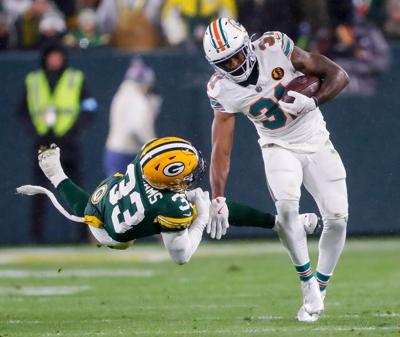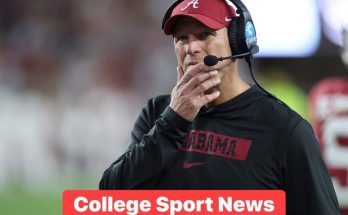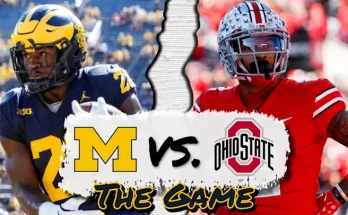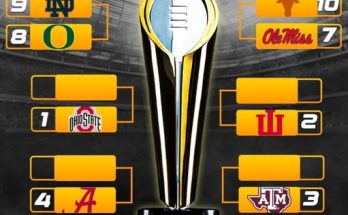Miami Dolphins Release Running Back Raheem Mostert, Along with Two Other Veterans: What It Means for the Team’s Future
In a surprising and somewhat dramatic turn of events, the Miami Dolphins have officially announced the release of running back Raheem Mostert, along with two other veterans, marking a significant shift in the team’s roster heading into the 2024 NFL season. This move has sent ripples through the football world, particularly as it involves Mostert, who was a key figure in the Dolphins’ offense in 2023. His departure, combined with the release of two other experienced players, signals a potential overhaul in the team’s approach as it gears up for the next phase of its pursuit of a championship.
Raheem Mostert’s Impact on the Dolphins
Raheem Mostert’s release is undoubtedly the most high-profile of the three moves. Mostert, who joined the Dolphins in 2021, had established himself as one of the NFL’s most explosive running backs, particularly known for his speed and big-play ability. His tenure in Miami had been marked by an impressive blend of agility, experience, and leadership. In the 2023 season, Mostert was an integral part of the Dolphins’ offense, finishing as the NFL’s leader in total touchdowns with 22. His ability to break away for long runs, catch passes out of the backfield, and contribute in critical moments made him one of the most dynamic playmakers for Miami.
Mostert’s numbers over the last few seasons speak for themselves: he provided stability and reliability in the running game, helping the Dolphins’ offense stay balanced while also playing a key role in their red-zone efficiency. In 2023, he totaled 1,235 rushing yards, 12 touchdowns, and had 306 receiving yards, all while maintaining a steady presence as a veteran leader in the locker room. His performance was pivotal in the Dolphins’ offensive success, and losing him leaves a significant hole in the backfield.
Why Did the Dolphins Release Mostert?
The decision to part ways with Mostert comes as a surprise, especially considering the success he had in 2023. However, it’s likely that Miami’s front office is taking a long-term view of the roster and the cap space. Releasing Mostert frees up valuable salary cap room, which could be crucial as the Dolphins look to retool other parts of the roster. Specifically, Miami has several pressing needs, including improving the offensive line and further strengthening their defense, and freeing up cap space allows the team to pursue these areas more aggressively.
Furthermore, Miami’s coaching staff under Mike McDaniel may be leaning toward a younger, more versatile running back committee rather than relying on a single back to carry the load. With younger backs like Salvon Ahmed and De’Von Achane already in the fold, the team may be looking to develop these players, who bring different skill sets to the table. By letting Mostert go, Miami can allow these young players to step into larger roles and contribute to the offense, perhaps with a more diverse approach in terms of playcalling and running back usage.
Another reason for the release could be tied to the Dolphins’ overall offensive philosophy. The NFL has increasingly trended toward a more pass-heavy league, and while Mostert was an effective part of the running game, the Dolphins may be focused on maximizing their investment in star receivers Tyreek Hill and Jaylen Waddle, along with quarterback Tua Tagovailoa. With a passing game that already stretches the field, Miami may feel the need to invest in a more balanced offensive approach that gives greater emphasis to their explosive aerial attack while still keeping a strong running game in reserve.
The Other Two Veteran Releases
In addition to Mostert, the Dolphins also made the decision to release two other veteran players. These moves, while not as widely discussed, may be indicative of the franchise’s intent to clear space and shift toward a younger, more dynamic roster. The releases could also reflect Miami’s commitment to improving both sides of the ball and ensuring that their key positions are filled with the most talented and cost-effective players available.
The release of these veterans, while still under wraps in terms of specifics, could signal the Dolphins’ desire to move away from aging or overpaid players, particularly as they prepare to enter a critical season. As Miami works to solidify its place as one of the top teams in the AFC, the front office likely sees the 2024 season as an important year to maximize cap flexibility and explore new roster-building opportunities. This could mean a shift toward youthful energy and speed, which has been a hallmark of the Dolphins’ strategy in recent years.
The Future of the Dolphins’ Backfield
The most significant gap created by the release of Raheem Mostert is in the backfield, where he had been a reliable option for Miami. Mostert’s departure leaves the Dolphins with questions about how they will approach their running game in 2024. As mentioned, Miami already has promising young backs in Salvon Ahmed and De’Von Achane.
Salvon Ahmed has shown flashes of potential but has yet to become the focal point of the offense. He is a versatile back who can contribute both in the running game and as a pass-catcher. While he doesn’t have the breakaway speed that Mostert possessed, he is a solid and dependable player who can step up in the absence of a star.
De’Von Achane, on the other hand, is a dynamic talent that the Dolphins are eager to develop. Known for his explosive speed and ability to make defenders miss, Achane has the potential to be a game-changer in Miami’s offense. With Mostert gone, Achane could step into a larger role as the team’s primary ball carrier and receiving option out of the backfield. He could be the perfect fit for McDaniel’s offense, which favors speed and creativity.
The Dolphins could also look to add another running back through the draft or free agency. Miami has typically employed a running back committee approach, so they may opt to bring in another player who can complement Ahmed and Achane, providing depth and versatility. Whether it’s a more traditional power back or a speedy change-of-pace option, the Dolphins’ front office will likely explore all avenues to strengthen the position.
Cap Flexibility and What’s Next for Miami
The release of Mostert and the two other veterans gives the Dolphins significant cap space moving forward, which could be used to address other positions of need. Miami’s defense is one area that could see an influx of talent, particularly in the secondary and defensive line. The Dolphins have one of the most talented corners in the NFL in Xavien Howard and recently acquired Jalen Ramsey, but additional depth and playmakers could elevate the defense to the next level.
On offense, the Dolphins have been aggressive in building around their quarterback Tua Tagovailoa, and with the cap space now available, they may look to bolster the offensive line to protect their franchise quarterback and open running lanes for the backs. Miami’s offense has the potential to be one of the most high-powered in the league, but having a solid offensive line is essential for the success of that unit.
The Dolphins could also look to upgrade at other skill positions, particularly if they choose to move away from a traditional workhorse running back. With Mostert no longer in the fold, Miami might explore signing a veteran running back or even bringing in a wide receiver who can contribute in the backfield.
The Road Ahead: A New Era for Miami
The release of Raheem Mostert, along with the two other veteran cuts, represents a pivotal moment in the Miami Dolphins’ franchise. While the decision is a difficult one, it reflects the team’s commitment to improving the roster and building for the future. With cap space cleared, the Dolphins have the opportunity to make key additions to both the offense and defense, positioning themselves to contend for a playoff spot in 2024 and beyond.
While losing Mostert, who played a key role in the offense, is a blow, it opens the door for younger players to step up and contribute to a new chapter in Miami’s football story. The Dolphins’ offense, which already boasts one of the most dynamic passing attacks in the league, will now look to find its new identity in the running game, whether through the development of current backs like Ahmed and Achane, or through an external acquisition.
As the 2024 season approaches, the Dolphins will look to continue their upward trajectory, and these changes signal that they are committed to making the moves necessary to put themselves in the best position to succeed. The next few months will be crucial as the Dolphins reshape their roster and build a team capable of challenging the top contenders in the AFC.



